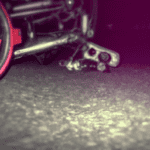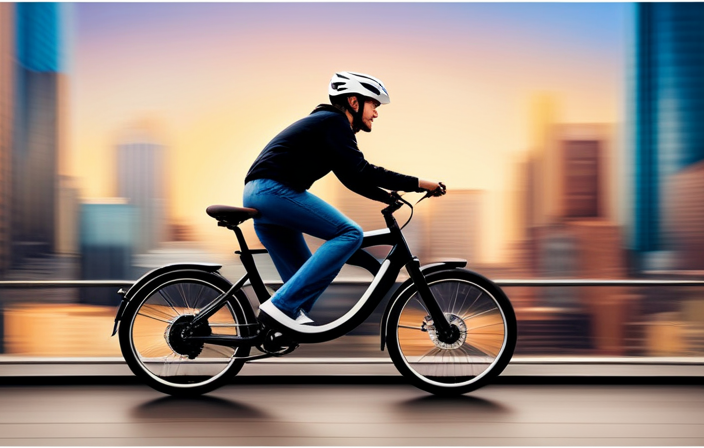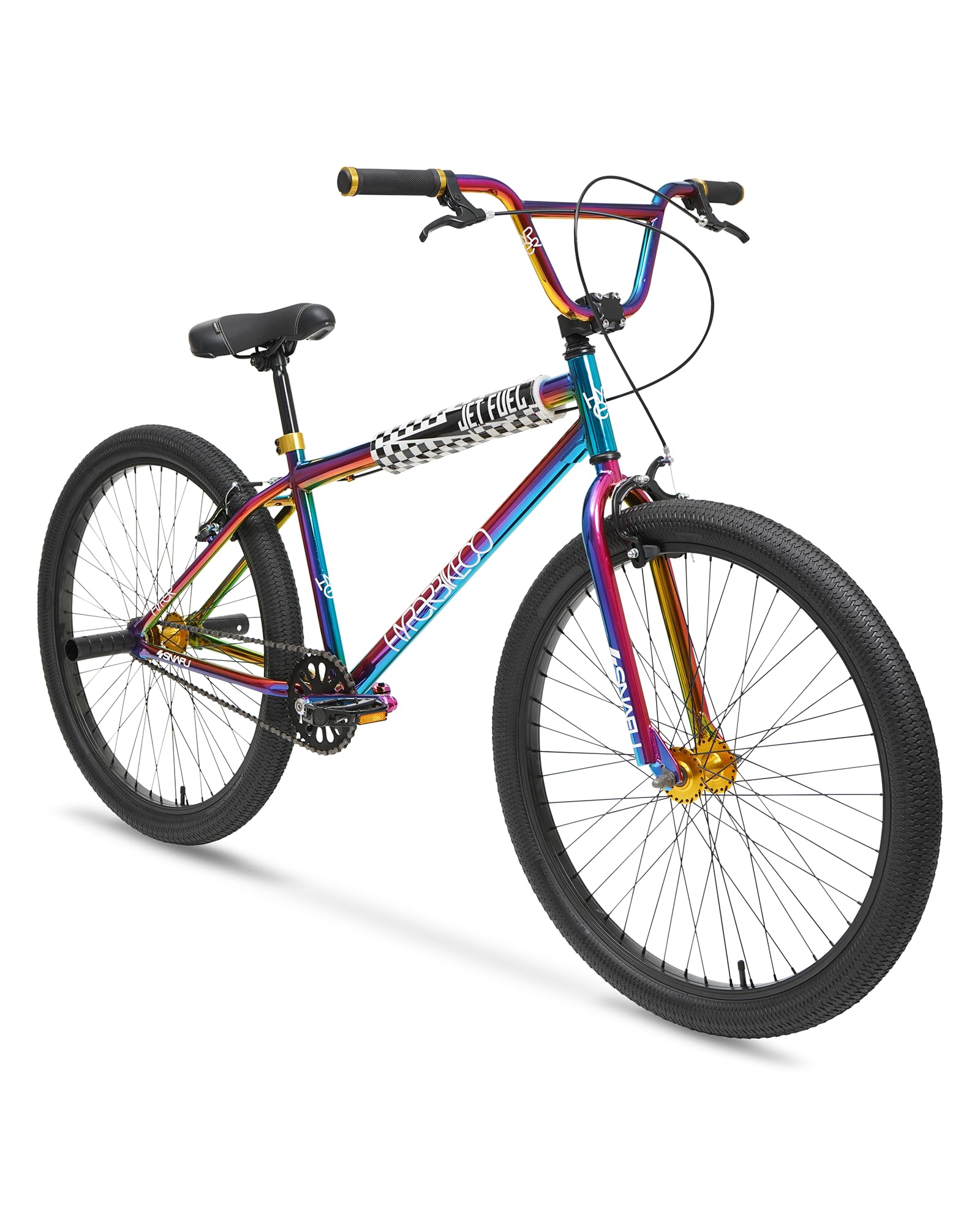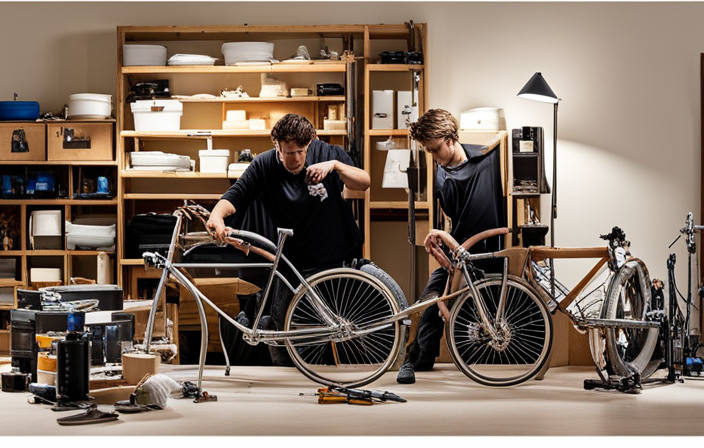Beginners Guides
Top 10 Must-Have Items in Your Bicycle First Aid Bag
Uncover the essential items for your bicycle first aid bag and be prepared for any trailside emergency – your safety depends on it!
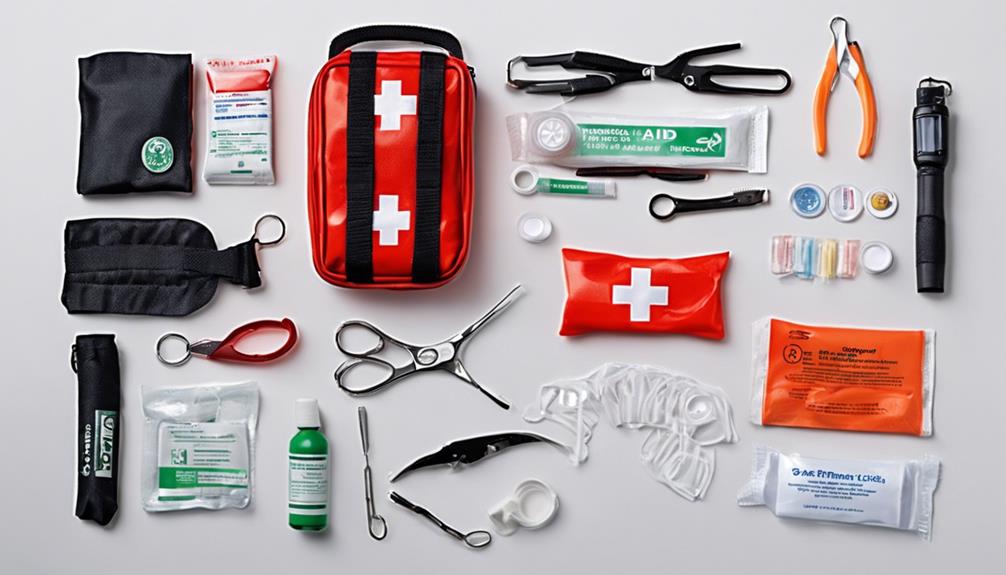
When hitting the trails on our bikes, having a well-equipped first aid bag is crucial for handling any unforeseen situations. Ensuring that we have the right items readily available can be a game-changer in dealing with emergencies during our rides.
From simple cuts and scrapes to more serious injuries, being prepared with the top 10 must-have items in our bicycle first aid bag can make all the difference in ensuring a safe and enjoyable cycling experience.
Key Takeaways
- Include adhesive bandages for covering cuts and scrapes, promoting quick healing.
- Antiseptic wipes are essential for cleaning wounds and preventing infections on the go.
- Carry gauze pads to absorb blood, prevent infections, and aid in wound care.
- Ensure pain management with pain relievers like ibuprofen, antihistamines for allergies in your first aid kit.
Adhesive Bandages
We always ensure our bicycle first aid bag includes a variety of adhesive bandages to cover small cuts and scrapes encountered during cycling. Adhesive bandages are essential for addressing minor wounds while on the go.
They play a crucial role in protecting small cuts from dirt and bacteria, promoting quicker healing, and preventing further injury. These bandages come in different sizes, shapes, and materials to cater to various types of wounds cyclists may experience.
Their convenience and ease of application make them a must-have item in any cyclist's first aid kit. By having a selection of adhesive bandages on hand, we can promptly address any small cuts or scrapes that may occur during our rides, allowing us to continue cycling with peace of mind.
Antiseptic Wipes

Antiseptic wipes are crucial for effectively cleaning and preventing infections in minor wounds. Their convenient individually wrapped packaging makes them easy to carry in a bicycle first aid bag.
Including antiseptic wipes ensures proper wound care and reduces the risk of complications while cycling.
Wound Cleaning Essentials
When cycling, it's crucial to have wound cleaning essentials like antiseptic wipes in your first aid bag to prevent infections and promote proper wound care. Antiseptic wipes are convenient, portable, and effective for on-the-go wound cleaning. These wipes contain antiseptic agents like alcohol or benzalkonium chloride, which help kill bacteria and reduce the risk of complications from minor injuries.
Including antiseptic wipes in your bicycle first aid kit is a proactive step to ensure you can address any wounds promptly. Remember, proper wound care with antiseptic wipes can make a significant difference in how quickly and effectively your injuries heal during cycling emergencies.
- Convenient and portable
- Contains antiseptic agents like alcohol or benzalkonium chloride
- Helps kill bacteria and prevent infections
- Promotes quick and effective wound care
Prevent Infection Effectively
After addressing wound cleaning essentials, the next critical step is to focus on effectively preventing infections using antiseptic wipes in your bicycle first aid bag. Antiseptic wipes are crucial for infection prevention in minor wounds as they contain antibacterial agents that help clean the affected area and reduce the risk of bacterial contamination. They are convenient, portable, and easy to use, making them ideal for on-the-go first aid care during cycling. Using antiseptic wipes promptly after an injury can help minimize the chances of developing an infection, promoting faster healing. Including antiseptic wipes in your bicycle first aid kit ensures you have a reliable way to disinfect minor wounds and maintain proper hygiene while cycling.
| Antiseptic Wipes | Infection Prevention | Minor Wounds |
|---|---|---|
| Antibacterial | Reduces contamination | Promotes healing |
Gauze Pads
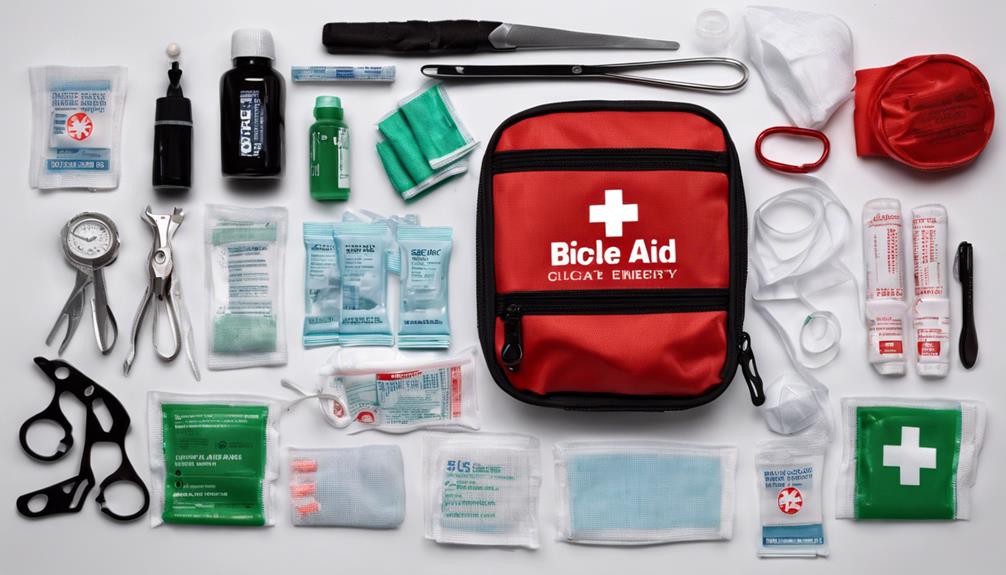
Gauze pads play a crucial role in proper wound care by absorbing blood and preventing infections. They're versatile, coming in various sizes to address different types of injuries effectively.
Including a range of gauze pad sizes in our bicycle first aid kit ensures we can handle various wounds and minimize infection risks.
Proper Wound Cleaning
In our bicycle first aid bag, we always include gauze pads for effective wound cleaning and protection. Gauze pads play a crucial role in proper wound care by absorbing blood and fluids while preventing infections.
Here are some key points to remember about gauze pads:
- Essential for preventing infection and promoting healing.
- Come in various sizes, such as 2×2 inches, suitable for different wounds.
- Non-adherent to wounds, reducing pain during dressing changes.
- Can be secured with adhesive tape or bandages for added protection.
Having gauze pads in your first aid kit ensures you're prepared to handle a variety of injuries effectively.
Dressing Wounds Effectively
When dressing wounds effectively, it is crucial to properly select and apply gauze pads to promote healing and prevent infections. Gauze pads are essential for absorbing blood and other fluids, aiding in the healing process. These pads come in various sizes, such as 2×2 inches, to cover wounds adequately. They are non-adherent, ensuring they do not stick to the wound and cause additional discomfort. Individually packaged gauze pads maintain sterility, reducing the risk of infection during first aid use. Proper application of gauze pads can help control bleeding, shield the wound from contaminants, and facilitate healing for various cycling injuries.
| Key Point | Description | Benefits |
|---|---|---|
| Absorb Blood and Fluids | Gauze pads absorb blood and fluids to aid in the healing process. | Promotes healing |
| Various Sizes Available | Different sizes, like 2×2 inches, cater to covering wounds of varying sizes. | Fits different wound sizes |
| Non-Adherent | Non-adherent properties prevent sticking to the wound during dressing changes. | Reduces pain and damage |
| Individually Packaged | Individually packaged for maintaining sterility and reducing infection risks. | Ensures cleanliness |
| Facilitate Healing | Proper application helps control bleeding, protect the wound, and aid healing. | Supports the recovery process |
Preventing Infection Risks
To safeguard against potential infections, incorporating gauze pads in your bicycle first aid kit is crucial for promoting wound healing and maintaining cleanliness. Gauze pads act as a sterile barrier, protecting the wound from outside contaminants.
Here are some key points to consider about gauze pads:
- Gauze pads are available in various sizes, making them versatile for different wound sizes.
- They can absorb blood and other fluids from the wound to promote healing.
- Properly applying gauze pads helps create a clean environment for wound healing.
- Using gauze pads can reduce the risk of complications and aid in the overall healing process.
Adhesive Tape

Securing dressings and bandages during cycling accidents is made easier with the versatile and reliable hold provided by adhesive tape. This essential item ensures that bandages stay in place, preventing further injury or contamination. Adhesive tape is compact and lightweight, fitting perfectly into any bicycle first aid kit. Its strong hold is crucial for keeping wounds protected while you continue your ride. Here's a quick look at why adhesive tape is a must-have in your cycling first aid bag:
| Benefits of Adhesive Tape | Description |
|---|---|
| Versatile Hold | Keeps bandages secure during movement. |
| Easy to Cut | Can be tailored to different wound sizes. |
| Compact | Takes up minimal space in your kit. |
| Lightweight | Ideal for carrying on cycling trips. |
With adhesive tape on hand, you can swiftly address any cuts or injuries that may occur while enjoying the freedom of the open road.
Tweezers
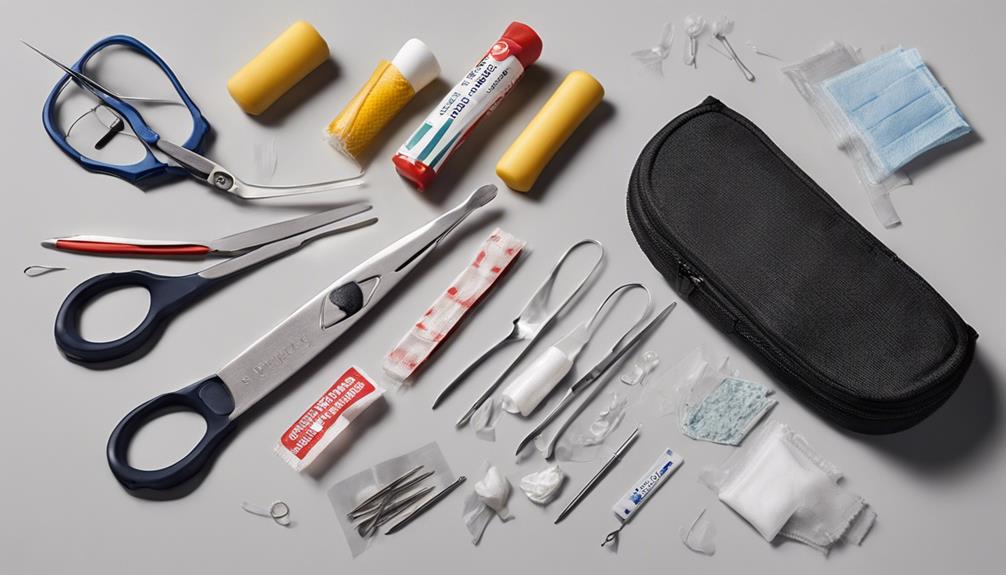
Having a reliable pair of tweezers in your bicycle first aid bag is essential for addressing minor injuries and removing foreign objects from the skin. Tweezers play a crucial role in managing skin injuries while biking, allowing for quick removal of splinters, thorns, or small debris that may cause discomfort or lead to infections.
Here are some key points about tweezers:
- Tweezers are versatile tools designed for precision in extracting foreign objects from the skin.
- They come in various sizes and shapes, with pointed or slanted tips to cater to different needs.
- Lightweight and compact, tweezers are easy to carry in a bicycle first aid bag or pocket.
- Quality tweezers with a good grip can make it easier to remove embedded objects from the skin during outdoor activities like biking.
Including tweezers in your first aid kit ensures that you can promptly address minor wounds or irritations, promoting a safer and more comfortable biking experience.
Scissors
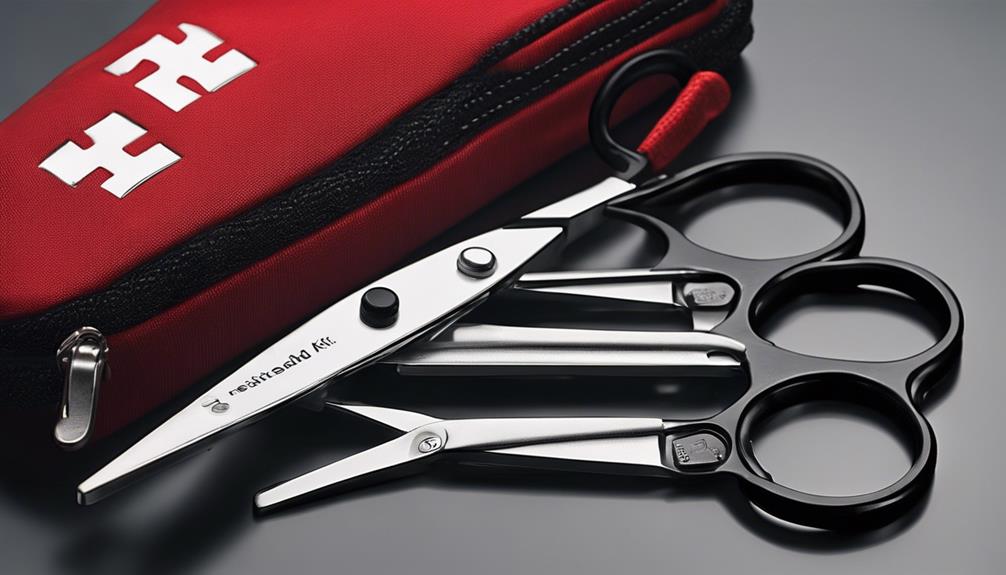
When it comes to our bicycle first aid bag, scissors play a crucial role in our emergency preparedness. These versatile tools are essential for cutting bandages, clothing, or other materials when needed.
It's important to choose scissors with blunt tips for safety and consider features like serrated edges for better grip and precision.
Essential Cutting Tool
We recommend including a pair of sharp and compact scissors in your bicycle first aid bag for efficient cutting during emergency situations. When choosing scissors for your kit, opt for ones with rounded tips to avoid accidental injuries. Ensure they're sharp and durable to cut through various materials easily. Compact and lightweight scissors are ideal for a bicycle first aid bag, as they won't add bulk. For more heavy-duty cutting tasks in emergencies, consider adding a pair of trauma shears to your kit.
- Choose scissors with rounded tips to prevent accidental injuries.
- Ensure scissors are sharp and durable for cutting through various materials.
- Opt for compact and lightweight scissors to fit easily into your first aid bag.
- Consider adding trauma shears for more heavy-duty cutting tasks.
Safety in Emergencies
Scissors are a crucial tool for ensuring safety in emergencies by enabling quick and precise cutting of materials in a bicycle first aid kit. They play a vital role in emergency situations, allowing for the efficient cutting of bandages or clothing to attend to injuries promptly. It is important to select scissors with rounded tips to prevent accidental skin punctures during use. By having scissors in your first aid bag, you can respond effectively to various medical situations while cycling. Compact and lightweight scissors are ideal for inclusion in a bicycle first aid kit, as they provide the necessary cutting capabilities without adding extra bulk or weight.
| Features | Description | Importance |
|---|---|---|
| Quick Cutting | Enables fast material cutting | Essential |
| Rounded Tips | Prevents skin punctures | Safety Measure |
| Lightweight | Easy to carry in first aid kit | Convenience |
Versatile Tool Usage
In emergencies, the versatile usage of scissors in a bicycle first aid bag extends to quickly and efficiently cutting materials like bandages and clothing for prompt injury care. Scissors are indispensable tools for accessing and treating wounds, as well as removing clothing to assess injuries during emergencies. Opting for scissors with rounded tips enhances safety in first aid situations, preventing accidental cuts or punctures on the patient's skin. Compact and durable scissors are ideal for fitting into a bike first aid kit without occupying excessive space. With scissors readily available in your first aid bag, you can respond effectively to various medical situations while cycling.
- Efficiently cut bandages and clothing
- Essential for treating wounds
- Opt for rounded tips for safety
- Compact and durable for bike first aid kits
Pain Relievers
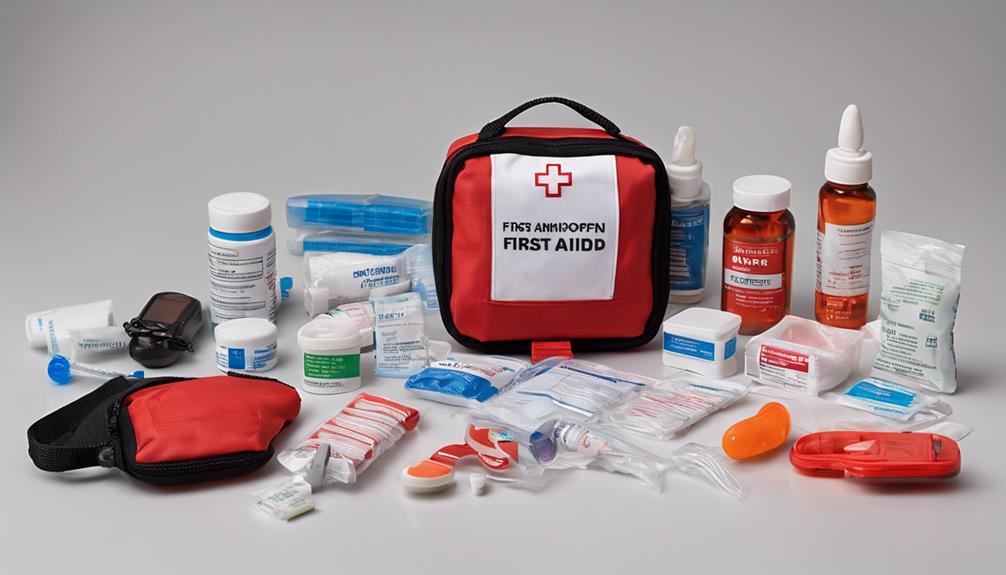
When cycling, it's crucial to have pain relievers like ibuprofen or acetaminophen readily available in your first aid bag to alleviate common discomforts such as muscle aches or joint pain. These medications can help reduce inflammation and manage minor injuries or muscle strains while on the road. It's advisable to carry pain relievers in individual packets or a small container for easy access during rides. Non-steroidal anti-inflammatory drugs (NSAIDs) are often recommended for pain relief in cycling first aid kits. Remember to check the expiration dates of pain relievers regularly to ensure their effectiveness.
| Pain Relievers | Description |
|---|---|
| Ibuprofen | Effective for reducing pain and inflammation. |
| Acetaminophen | Helps relieve mild to moderate pain, but does not reduce inflammation. |
Having these pain relievers handy can make a substantial difference in your cycling experience by providing quick relief when muscle aches or other pains arise.
Antihistamine
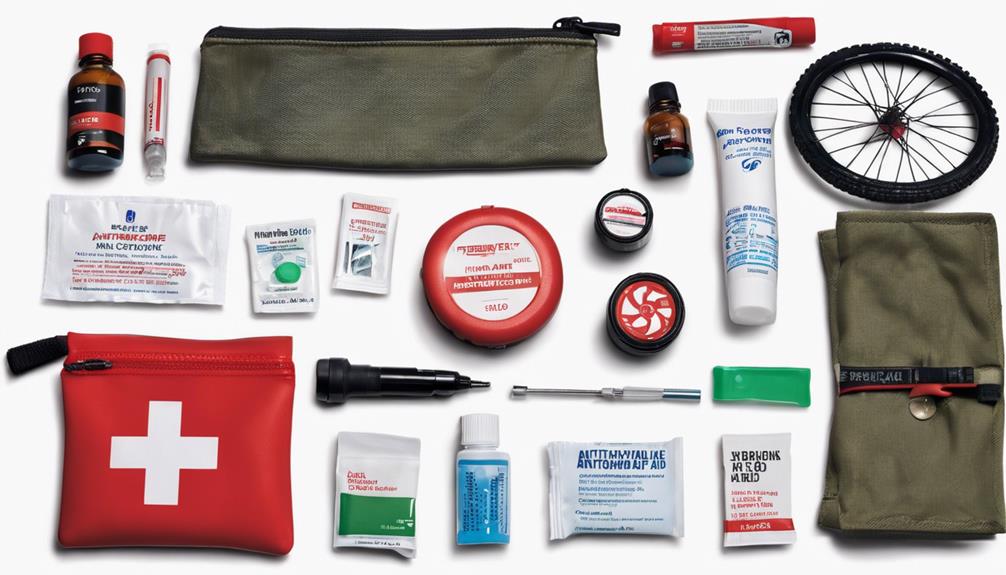
Including antihistamines in your bicycle first aid kit can be beneficial for addressing allergic reactions encountered during cycling trips, providing quick relief from itching, swelling, and other allergy symptoms. Antihistamines, such as Benadryl, are crucial in treating allergic reactions while out on a ride. These medications help reduce itching, swelling, and other symptoms caused by allergies or insect bites. They're available in various forms, including tablets, capsules, liquids, and creams. Remember to follow the recommended dosage instructions for antihistamines to ensure safe and effective use.
- Antihistamines, like Benadryl, are essential for treating allergic reactions.
- These medications help reduce itching, swelling, and other allergy symptoms.
- Antihistamines come in various forms such as tablets, capsules, liquids, and creams.
- Following recommended dosage instructions is crucial for safe and effective relief from allergic reactions.
Gloves
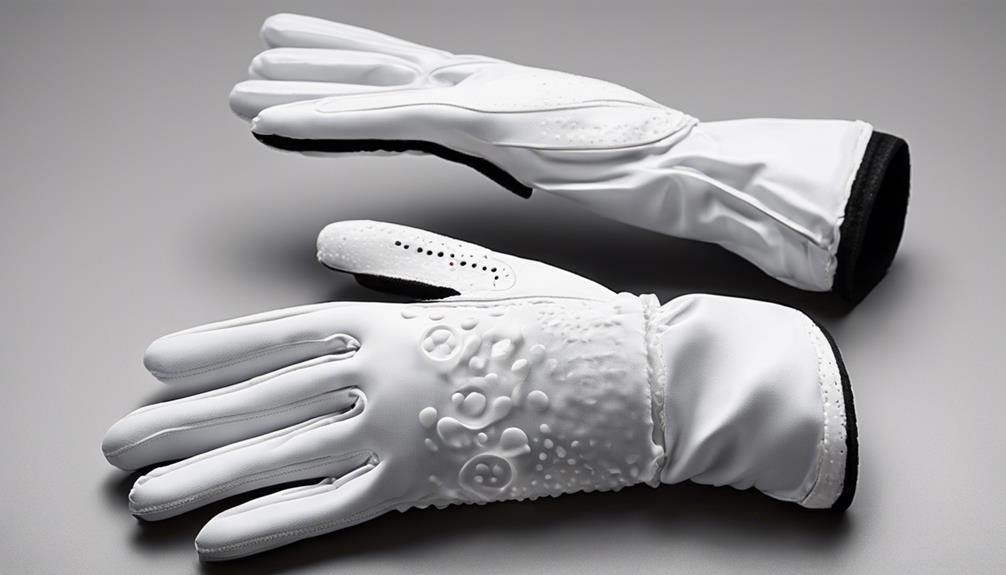
Equipping your bicycle first aid bag with gloves is essential for ensuring proper hygiene and preventing infections during medical emergencies. Gloves act as a protective barrier, reducing the risk of infection by preventing direct contact between the responder's hands and the wound. Maintaining hygiene is crucial in first aid procedures to prevent the transfer of bacteria or contaminants that could worsen the injury. Latex or nitrile gloves are commonly recommended for their durability and resistance to punctures or tears, ensuring reliable protection during emergencies.
When there's direct contact with blood, bodily fluids, or open wounds, wearing gloves is necessary to safeguard both the responder and the injured individual. After use, proper disposal of gloves is vital to prevent the spread of pathogens and maintain a clean environment. By including gloves in your bicycle first aid bag, you prioritize safety, hygiene, and infection prevention, essential components of effective emergency care.
Emergency Contact Information
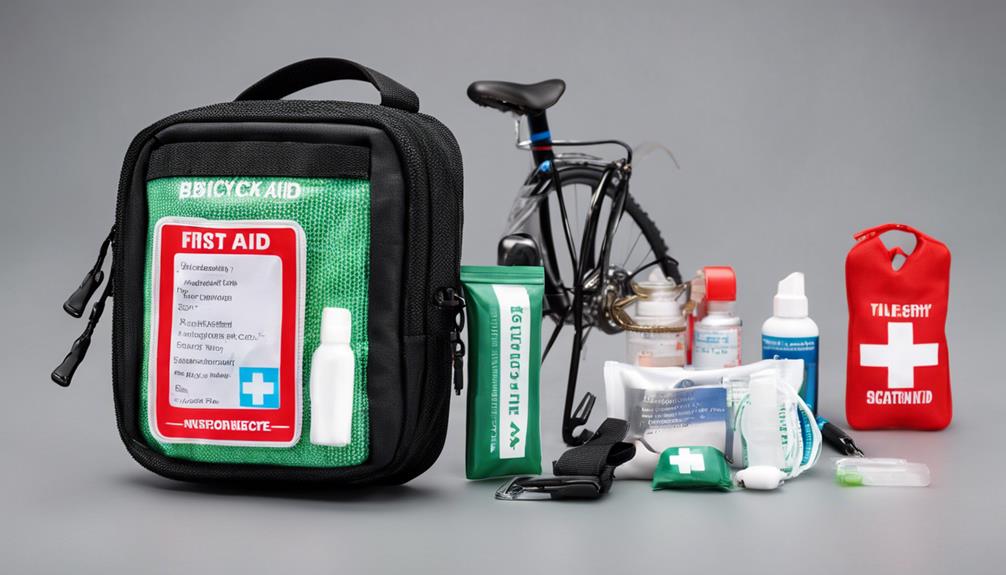
To ensure prompt assistance in case of an emergency while cycling, it's crucial to have readily accessible emergency contact information in your bicycle first aid bag. Including emergency contact information for yourself, family members, and relevant healthcare providers is essential. Consider adding ICE (In Case of Emergency) contacts to your bag to expedite the process. Providing detailed information such as names, phone numbers, and any important medical details can ensure proper care in case of an accident or injury.
- Include emergency contact information for yourself, family members, and any relevant healthcare providers.
- Ensure that the contact information is easily accessible in case of an emergency while cycling.
- Consider including ICE (In Case of Emergency) contacts in your bicycle first aid bag.
- Provide detailed information such as names, phone numbers, and any important medical details.
Frequently Asked Questions
What Should Be in a Biking First Aid Kit?
In a biking first aid kit, we typically include band-aids, gauze pads, tape, antibiotic ointment, and anti-itch cream. It's crucial to have essentials like Brave Soldier Crash Pack, SAM splints, Betadine, and Tegaderm for emergencies.
What Is 10 Item in a First Aid Kit?
We believe a first aid kit should include band-aids, gauze pads, waterproof tape, anti-biotic ointment, anti-itch cream, Brave Soldier Crash Pack, non-adhering wound dressings, butterfly closures, Betadine, Tegaderm, and SAM splints. Training in Wilderness First Aid and Basic First Aid/CPR is crucial.
What Must Be Inside the First Aid Bag Kit?
Inside our first aid bag kit, we pack essentials like band-aids, gauze pads, waterproof tape, antibiotic ointment, and anti-itch cream. These items help us handle cuts, scrapes, and insect bites while biking, ensuring we stay prepared for any minor emergencies.
What Are 5 Important Items in a First Aid Kit?
Here are five essential items for a first aid kit: band-aids for minor cuts, gauze pads for larger wounds, waterproof tape to secure dressings, antibiotic ointment to prevent infection, and anti-itch cream for bug bites.
Conclusion
In conclusion, having a well-equipped first aid bag is crucial for any cyclist hitting the trails. Being prepared with the top 10 must-have items can make all the difference in addressing injuries or emergencies.
Remember, it's better to have it and not need it, than to need it and not have it. Stay safe, stay prepared, and enjoy your ride knowing you're ready for whatever comes your way.
Olivia’s writing is not only informative but also inspiring. She has a knack for telling stories that capture the essence of cycling and the joy it brings to people’s lives. Her writing has been praised by readers and industry experts alike for its clarity, depth, and authenticity.
In addition to her writing, Olivia is also an avid cyclist. She enjoys exploring new trails and routes and has participated in several cycling events and races. Her first-hand experience with cycling gives her a unique perspective on the sport, reflected in her writing.
Overall, Olivia is a talented writer passionate about cycling and dedicated to producing high-quality content for FlatironBike. Her contributions to the magazine have helped make it a go-to source for cycling enthusiasts worldwide.
Beginners Guides
Mastering Bicycle Gear Use on Flat Roads
Uncover the secrets to mastering bicycle gear use on flat roads and revolutionize your cycling performance like never before.

Have you ever wondered if mastering the use of bicycle gears on flat roads could significantly improve your cycling performance? Understanding the intricate gear mechanisms and honing efficient gear changing techniques can truly elevate your riding experience.
But there's more to it than just shifting gears; optimal gear selection and cadence play crucial roles in maximizing your cycling efficiency.
Stay tuned to uncover valuable tips and tricks that will help you become a gear-shifting pro on flat terrains.
Key Takeaways
- Optimize gear ratios with front chainrings and rear cassette for efficient flat road cycling.
- Use precise gear changes to maintain a consistent cadence and power output.
- Avoid common gear mistakes like high gears and cross-chaining for improved performance.
- Experiment with different gear combinations to find the ideal balance of comfort and efficiency.
Gear Mechanism Basics
Exploring the intricacies of the gear mechanism on road bikes reveals the fundamental components that dictate pedaling efficiency and performance on flat terrain. The gear system comprises the front chainrings attached to the pedals and the rear cassette, with its array of cogs offering various resistance levels. The front chainrings play a pivotal role in major speed adjustments, while the rear cassette allows for subtle tweaks to optimize pedaling on flat roads.
When shifting the front chainring, cyclists experience notable gear ratio modifications, significantly impacting the required pedaling effort. On the other hand, adjusting the rear cassette with the appropriate lever enables riders to finely tune resistance levels for maximum efficiency on flat terrain. This manipulation of gears is crucial in maintaining an ideal cadence and power output, ensuring a smooth and effective riding experience.
Understanding the interplay between the chain, cassette, front, rear, lever, and cogs is essential for mastering gear utilization and enhancing cycling performance on flat roads. By grasping these gear mechanism basics, cyclists can unlock the full potential of their road bike and enjoy a liberating and empowering ride.
Efficient Gear Changing Techniques

When optimizing gear changes for flat road cycling, precision in adjusting the rear cassette with the right brake lever is key to maintaining pedaling efficiency and speed control. On flat roads, using the small lever located behind the right brake lever allows for easier and more efficient shifting of the rear gears. By utilizing the right brake lever along with the small lever, cyclists can fine-tune the gearing with their right hand, ensuring smooth gear changes and optimal pedaling efficiency.
Efficient gear changing techniques on flat roads involve utilizing the right lever for precise adjustments to the rear cassette. This method enables cyclists to make minor pedaling speed changes without compromising their momentum. By mastering the art of adjusting the rear gears with the right brake lever, riders can experience a comfortable and efficient cycling experience, where gear changes happen seamlessly, enhancing the overall enjoyment of the ride. Smooth gear changes are essential for maintaining a consistent cadence and achieving a balanced power output on flat terrains.
Optimal Gear Selection Tips
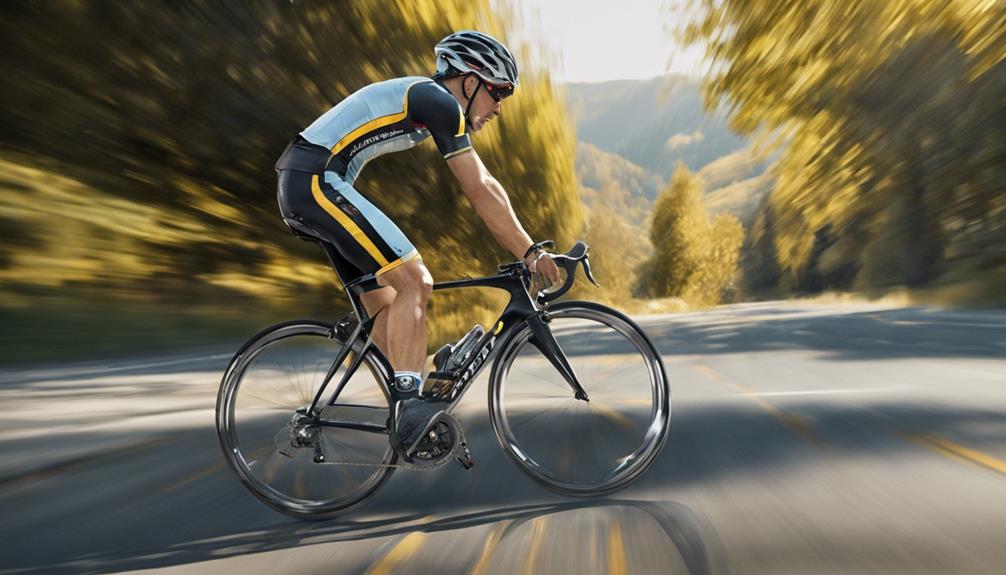
What gear ratios are most suitable for flat road cycling to ensure optimal performance and efficiency? When cycling on flat roads, it's essential to select the right gears to maximize your efficiency and enjoyment. Here are some tips to help you make the best gear selections:
- Choose the Right Crank: Opt for a standard crank if you're a strong rider looking for power on flat terrain, or consider a mid-compact crank for more versatility when encountering varied landscapes.
- Utilize Cassettes with Less Range: Optimal gear selection for flat roads involves using cassettes with a narrower range of gears. This setup allows for seamless transitions between gears, promoting a smoother riding experience.
- Select Appropriate Gear Combinations: Experiment with different gear combinations, including low, middle, and high gears, to find the ones that offer the best balance of comfort and efficiency on flat roads.
Avoiding Common Gear Mistakes
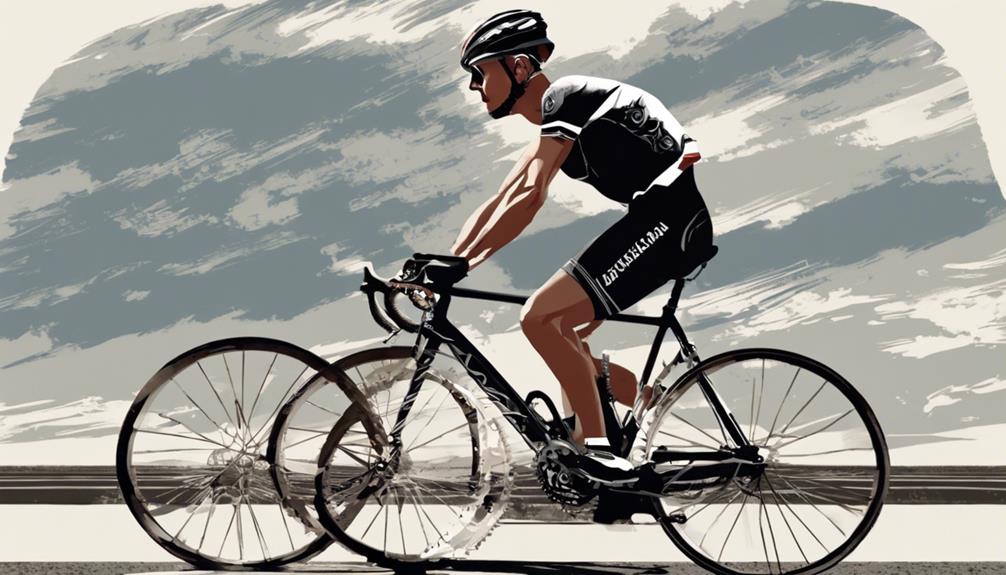
To optimize your performance and prevent strain on flat roads, it's important to avoid common gear mistakes. These include using high gears excessively, maintaining a moderate pace with middle gears, and steering clear of cross-chaining for smoother pedaling.
When cycling on flat terrain, avoiding high gears is crucial to prevent excessive strain on your muscles and joints. Instead, opt for a middle gear to sustain a comfortable pace while conserving energy. Cross-chaining, or using extreme gear combinations, should be avoided to ensure smooth pedaling motion and reduce the risk of gear wear.
Proper gear selection on flat roads is essential for efficiency and reducing fatigue. By utilizing the rear cogs for minor adjustments in gear ratio, you can optimize your cycling experience, enhance comfort, and enjoy a more pleasant ride. Remember, the right gear choice can make a significant difference in your overall performance on flat roads.
Improving Cycling Efficiency on Flats

Improving cycling efficiency on flat terrains requires precise gear selection tailored to the athlete's strength and terrain flexibility, ensuring optimal performance and comfort. When aiming for peak efficiency on flat road conditions, consider the following:
- Optimal Gear Selection: Choose between a standard crank for strong riders or a mid-compact crank for versatility in varied terrains, allowing for better adaptation to flat road conditions.
- Smooth Transitions: Opt for cassettes with narrower gear ratios to facilitate seamless gear changes, promoting smoother transitions and reducing disruptions in cadence on flat surfaces.
- Enhancing Pedaling Efficiency: Experiment with different gear combinations such as low, middle, and high gears to find the optimal balance between effort and speed, maximizing pedaling efficiency for improved cycling performance.
Frequently Asked Questions
What Gear for Flat Road Cycling?
For flat road cycling, we recommend selecting a gear that allows for efficient pedaling without excessive strain. Finding the right balance between resistance and cadence is key to enjoying a smooth and comfortable ride.
What Gear Do You Use to Ride a Flat Bike?
We ride flat roads in a middle gear for smooth pedaling and energy conservation. Choosing the right gear ratio prevents muscle strain and maintains a steady cadence. High gears cover more distance per pedal turn, enhancing performance.
How Do You Use Road Bike Gears Efficiently?
We maximize efficiency by smoothly shifting gears, maintaining cadence on flat roads. Our approach balances speed and power with mid-compact cranks, standard cranks for higher speeds, and narrower range cassettes. Modern drivetrains ensure seamless transitions for a steady ride.
Are Heavier Cyclists Faster on Flat?
We heavier cyclists may have an edge on flat roads thanks to increased momentum and power. The extra weight helps maintain speed and conquer wind resistance. Aerodynamics and power-to-weight ratio also matter, especially in time trials.
Conclusion
In conclusion, mastering bicycle gear use on flat roads is like finding the perfect rhythm in a symphony. Each gear change is a note played with precision, blending seamlessly to create a harmonious cycling experience.
By understanding the mechanics, practicing efficient techniques, and selecting optimal gears, cyclists can pedal with ease and grace. Just as a conductor directs an orchestra, mastering gear use allows us to control our ride with finesse and confidence.
Olivia’s writing is not only informative but also inspiring. She has a knack for telling stories that capture the essence of cycling and the joy it brings to people’s lives. Her writing has been praised by readers and industry experts alike for its clarity, depth, and authenticity.
In addition to her writing, Olivia is also an avid cyclist. She enjoys exploring new trails and routes and has participated in several cycling events and races. Her first-hand experience with cycling gives her a unique perspective on the sport, reflected in her writing.
Overall, Olivia is a talented writer passionate about cycling and dedicated to producing high-quality content for FlatironBike. Her contributions to the magazine have helped make it a go-to source for cycling enthusiasts worldwide.
Beginners Guides
7 Ways a Bicycle Is Useful to Us
Pedal into a world of possibilities with the incredible benefits a bicycle offers – from personal health to environmental impact.

Riding a bicycle is like unlocking a treasure chest of benefits waiting to be discovered. From boosting our physical health to reducing our carbon footprint, a bicycle is a versatile tool that offers more than meets the eye.
Let's explore the seven ways a bicycle can positively impact our lives and society as a whole.
Key Takeaways
- Improves physical health by enhancing fitness levels and strengthening muscles.
- Reduces environmental impact by cutting pollution and promoting sustainability.
- Saves money through cost-effective commuting and minimal maintenance costs.
- Enhances mental well-being by reducing stress, boosting brain function, and fostering social connections.
Health Benefits of Cycling
Cycling offers a myriad of health benefits, reducing the risk of various health conditions and improving overall fitness levels. Engaging in regular cycling serves as an excellent form of exercise that enhances cardiovascular fitness and muscle strength. This aerobic exercise not only aids in weight loss but also lowers the risk of stroke, heart attack, cancer, depression, diabetes, obesity, and arthritis. Just dedicating 2-4 hours per week to cycling can lead to significant health improvements, making it a time-efficient way to stay fit.
Additionally, the mental health benefits of cycling are noteworthy, as it provides a means to replace sedentary time with physical activity, promoting overall well-being. Even individuals with physical limitations can benefit from hand cycling, which offers cardiovascular and aerobic advantages for those with amputations, spinal injuries, or stroke recovery. Cycling truly embodies the essence of holistic health and vitality.
Environmental Friendliness
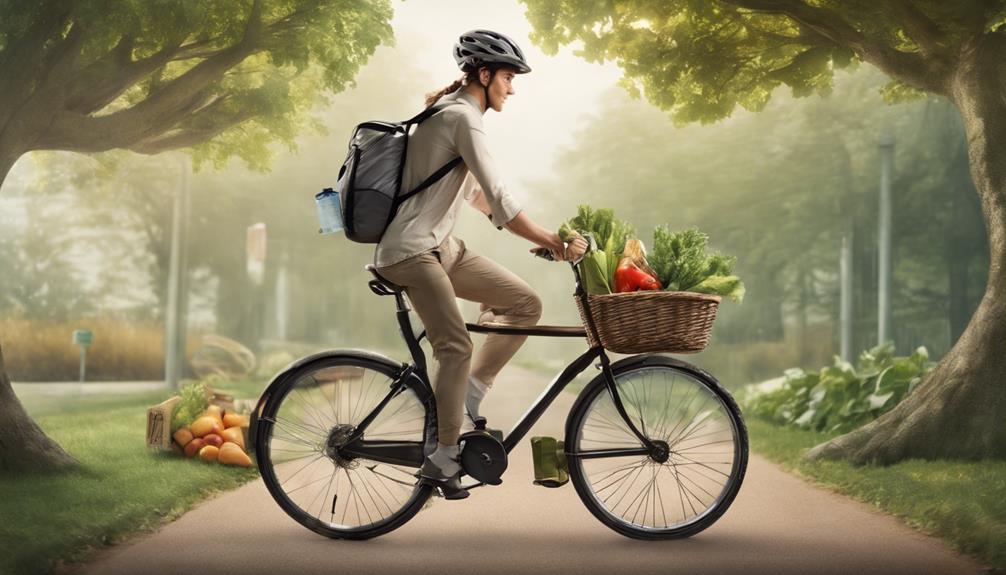
Bicycles, as an eco-friendly mode of transportation, play a crucial role in reducing pollution and promoting environmental sustainability. Riding a bike isn't only environmentally friendly but also offers numerous health benefits. Compared to vehicle passengers, cyclists inhale less pollution, contributing to better overall health. Commuting by bike significantly reduces the transportation carbon footprint by 67%, making it a sustainable choice for those concerned about environmental conservation.
In urban areas, where congestion and emissions are pressing issues, bikes provide a cleaner and healthier transportation option. By choosing to cycle instead of drive, individuals can actively help to reduce emissions and alleviate traffic congestion. Cycling not only benefits the individual rider but also contributes to a cleaner environment for all. Embracing bicycles as a means of transport is a step towards creating a more sustainable and eco-conscious society.
Cost-Effective Transportation Solution

Cycling offers an economic travel option for individuals seeking a budget-friendly commuting choice. By opting for a bicycle, we can enjoy an affordable way to travel that saves us money on fuel, insurance, and parking fees.
The minimal maintenance costs of bicycles compared to cars make them a cost-effective transportation solution for daily commuting needs.
Economic Travel Option
Embracing two-wheeled travel offers a budget-friendly and efficient way to navigate urban landscapes, saving on various transportation expenses. Cycling as an economic travel option not only helps in avoiding traffic congestion and parking expenses but also reduces the overall cost of commuting compared to owning a car. Bicycling serves as a cost-effective mode of transportation, cutting down expenses on fuel, registration, insurance, and maintenance. Furthermore, it promotes physical fitness, eliminating the need for costly gym memberships. By choosing bicycles for transportation, individuals can enjoy the built-in exercise benefits while minimizing travel costs.
| Benefits | Description |
|---|---|
| Cost-Effective | Saves money on fuel, registration, insurance, and maintenance. |
| Traffic Congestion | Helps in avoiding congested roads, leading to faster and more reliable travel. |
| Parking Expenses | Eliminates the need for expensive parking fees in urban areas. |
| Physical Fitness | Promotes health and wellness through regular physical activity. |
| Built-in Exercise Benefits | Provides exercise benefits while commuting, reducing the need for a separate gym membership. |
Budget-Friendly Commuting Choice
Navigating urban landscapes on two wheels presents a budget-friendly and efficient means of transportation, offering significant savings on various commuting expenses. Commuting by bike is a cost-effective option that helps individuals save money on fuel, maintenance, insurance, and registration fees.
Choosing a bicycle for commuting is an economical mode of transport, reducing overall transportation expenses and avoiding the high costs associated with car ownership. Cycling as transportation provides significant savings over time, making it a wise financial decision for those looking to cut down on commuting costs.
Affordable Way to Travel
When considering cost-effective transportation solutions, utilizing bicycles emerges as a practical and economical choice for travel. Cycling is an affordable way to travel, significantly reducing transportation costs compared to owning and maintaining a car. Here are some key points highlighting why cycling is a budget-friendly and practical option for travel:
- Bicycles are a cost-effective mode of transportation, saving money on fuel, registration, insurance, and maintenance.
- Using a bicycle for transportation helps avoid expenses associated with car ownership, making it a budget-friendly option.
- Bicycles provide an economical travel solution, minimizing the financial burden of fuel prices and maintenance fees.
- Choosing a bicycle for transportation is a practical and affordable option that contributes to overall cost savings.
Physical Fitness Improvement
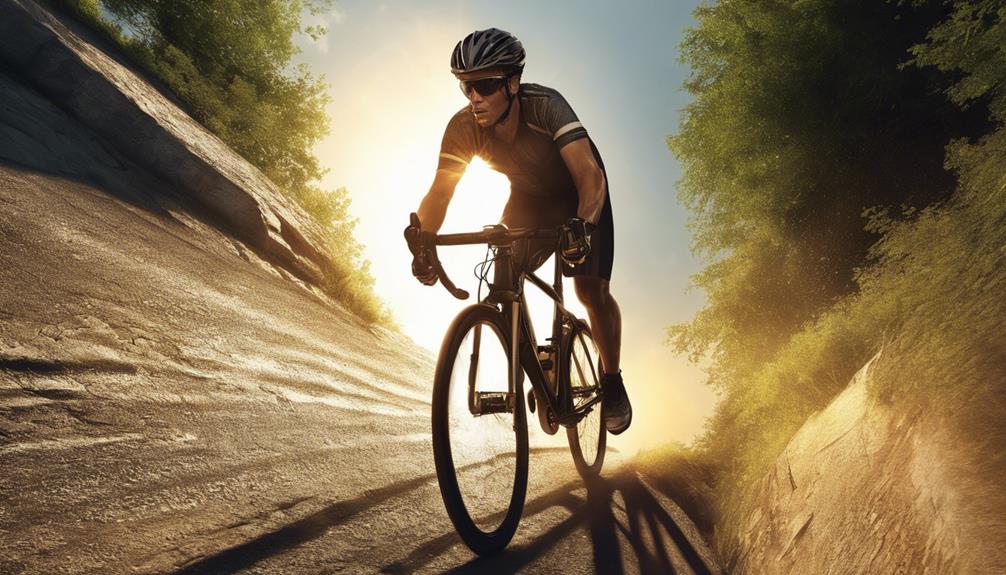
Cycling offers a substantial boost to our physical fitness levels by targeting key muscle groups and enhancing cardiovascular health. It's a low-impact exercise that strengthens the legs and improves balance, coordination, and posture.
Regular cycling sessions can help improve stamina, endurance, and overall cardiovascular function, making it a fantastic workout choice for individuals of all fitness levels.
Health Benefits
Improving physical fitness through cycling offers a range of benefits, including strengthening leg muscles, enhancing balance, posture, and coordination, and targeting key muscle groups such as quads, glutes, hamstrings, and calves.
Cycling is a low-impact exercise option that's gentle on the body and enhances cardiovascular function and overall fitness levels. It provides a time-efficient way to get fit and replace sedentary time with healthy exercise, benefiting individuals of all ages.
Regular cycling strengthens the cardiovascular system, enabling more exercise with less effort, and helps individuals achieve physical activity guidelines effectively. Adults cycling use 10 times more oxygen than sitting, promoting respiratory health by making the lungs work harder and delivering more oxygen where it's needed.
Cardiovascular Workout
Enhancing cardiovascular fitness through regular cycling contributes significantly to overall physical well-being and health. Cycling provides an effective cardiovascular workout, strengthening the heart, improving blood circulation, and lowering blood pressure.
By increasing heart rate, cycling helps improve cardiovascular fitness, reduce the risk of heart disease and stroke, and enhance endurance. This low-impact exercise is gentle on the joints while still offering a challenging workout.
Consistent cycling sessions lead to improved heart health, increased stamina, and enhanced physical fitness levels. Incorporating cycling into a routine not only benefits the heart but also contributes to overall well-being by boosting fitness and lowering the risks associated with a sedentary lifestyle.
Stress Reduction and Mental Wellbeing

Stress levels can be effectively reduced and mental well-being promoted through the scientifically proven benefits of cycling. Cycling isn't just a physical activity; it also has significant positive effects on mental health. Here are some key ways cycling contributes to stress reduction and mental well-being:
- Cycling releases endorphins, known as 'feel-good' hormones, which help reduce stress, anxiety, and depression.
- Regular cycling boosts brain function, enhances cognitive abilities, and improves overall mental health.
- Engaging in cycling stimulates blood flow to the brain, aiding in relaxation, focus, and concentration.
- Studies show that cycling is as effective as medication in reducing stress and promoting a positive mindset.
Community Connection and Social Interaction

Cycling not only promotes physical health but also nurtures a sense of community and encourages social interactions among individuals with shared interests. Riding a bicycle creates opportunities for community connection and social engagement through various avenues such as cycling clubs, group rides, and cycling events. Cyclists often come together to share their passion for biking, meet new people, make friends, and form lasting bonds.
| Community Connection | Social Interaction |
|---|---|
| Cycling clubs provide a platform for cyclists to engage with like-minded individuals. | Group rides offer a chance to connect with others while enjoying the thrill of cycling. |
| Community bike events, like charity rides or cycling festivals, foster an inclusive environment for cyclists. | Participating in cycling events allows cyclists to meet new people and form friendships based on their shared love for biking. |
In these settings, individuals find a supportive community that not only values their shared interest in cycling but also encourages social connections and interactions.
Sustainable and Green Lifestyle Choice

Choosing to ride a bicycle aligns with sustainable living practices and reduces our reliance on non-renewable resources. Bicycles are a sustainable transportation choice, producing zero emissions and reducing the carbon footprint. Opting for cycling helps create a greener environment by decreasing air pollution and harmful emissions. Cycling promotes a green lifestyle by minimizing the use of fossil fuels and contributing to cleaner air.
It's an eco-friendly mode of transport that supports the preservation of natural resources and aligns with sustainable living practices. By choosing bicycles over cars, we actively participate in reducing our carbon footprint and promoting green transportation. Embracing cycling as a sustainable and green lifestyle choice not only benefits our health but also plays a significant role in preserving the environment for future generations.
Let's pedal towards a more sustainable future together.
Frequently Asked Questions
What Can Bicycles Be Used For?
Bicycles can be used for commuting to work, school, or other destinations, reducing reliance on cars and public transportation. They are ideal for recreational purposes such as cycling tours, exploring nature trails, or participating in cycling events.
How Does the Bicycle Help Society?
Cycling weaves our urban tapestry with threads of health, community, and sustainability. Bicycles untangle traffic knots, paint green strokes on carbon clouds, and pedal us into a brighter, closer-knit future.
How Was the Bicycle Important?
The bicycle was crucial throughout history, revolutionizing transportation, empowering women, boosting economies, and promoting public health. Its impact continues to be felt worldwide, providing reliable transport and fostering physical activity, making it a truly enduring invention.
How Do Bikes Help the Environment?
Cycling, like a green breeze, helps the environment by reducing carbon emissions and air pollution. Bicycles are a sustainable transportation choice, cutting down our carbon footprint significantly compared to driving, contributing to cleaner air quality.
Conclusion
In conclusion, cycling offers a multitude of benefits for our health, the environment, and our wallets.
Did you know that cycling just 20 miles a week can reduce the risk of heart disease by 50%?
With its ability to improve physical fitness, mental well-being, and community connections, biking is truly a valuable and enjoyable way to stay healthy and happy.
So grab your helmet and hit the road for a sustainable and rewarding lifestyle choice!
Olivia’s writing is not only informative but also inspiring. She has a knack for telling stories that capture the essence of cycling and the joy it brings to people’s lives. Her writing has been praised by readers and industry experts alike for its clarity, depth, and authenticity.
In addition to her writing, Olivia is also an avid cyclist. She enjoys exploring new trails and routes and has participated in several cycling events and races. Her first-hand experience with cycling gives her a unique perspective on the sport, reflected in her writing.
Overall, Olivia is a talented writer passionate about cycling and dedicated to producing high-quality content for FlatironBike. Her contributions to the magazine have helped make it a go-to source for cycling enthusiasts worldwide.
Beginners Guides
What Are the Basics of How a Bicycle Freewheel Works?
Leveraging intricate mechanisms, bicycle freewheels allow wheels to spin freely—discover the fascinating basics and functions behind this essential component.

When we hop on our bicycles, we often take for granted the intricate workings of the freewheel in the rear hub. Did you know that the freewheel plays a vital role in allowing the wheel to rotate independently of the pedals?
Understanding the mechanisms behind how a bicycle freewheel operates can provide valuable insight into the smooth functioning of this essential component. Let's explore the inner workings of different types of freewheels and uncover the basics of their functionality to gain a deeper appreciation for this often overlooked yet crucial part of our bikes.
Key Takeaways
- Pawls and ratchets enable torque transmission and wheel movement.
- Ratchet and pawl mechanism ensures smooth power transfer and rider flexibility.
- Star ratchet freewheels offer robust construction and reliability on challenging terrains.
- Roller freewheels use ball bearing design for durability and smooth operation.
Components of a Bicycle Freewheel
In a bicycle freewheel, the components responsible for transmitting torque and facilitating forward pedaling are the pawls and ratchets. The ratchet and pawl system in the freewheel is integral to its function.
The pawls, small spring-loaded components, engage with the ratchet's teeth to allow the wheel to turn when the pedals are in use. This interaction forms the basis of the drive system, enabling the transfer of power from the rider's pedaling to the wheel.
The star ratchet design within the freewheel ensures that the pedals remain stationary when the wheel is spinning freely, preventing any unwanted backward rotation. When coasting or not pedaling, the pawls disengage from the ratchet, allowing the wheel to rotate independently without resistance.
This intricate mechanism of pawls and ratchets in the freewheel guarantees a smooth and efficient forward motion while offering the rider the freedom to pedal without constraint.
Ratchet and Pawl Mechanism Explained

Exploring the inner workings of a bicycle freewheel reveals the intricate and efficient system known as the ratchet and pawl mechanism. This mechanism plays a crucial role in enabling torque transmission and facilitating the forward movement of the bicycle.
Here's a breakdown of its key components:
- Ratchet and Pawl Interaction: The pawls engage with the teeth on the ratchet, allowing the wheel to move forward when the pedals are in motion.
- Disengagement for Free Movement: When the pedals are reversed, the pawls disengage from the ratchet, enabling free movement without propulsion.
- Spring Mechanism for Torque Transmission: A spring mechanism within the system ensures that the pawls engage effectively with the ratchet to transmit torque seamlessly.
- Audible Click Feature: The characteristic click sound heard when reversing pedals signifies the engagement and disengagement of the pawls with the ratchet.
This precise and reliable design ensures that the bicycle freewheel operates smoothly, providing efficient power transfer while maintaining the flexibility and freedom desired by cyclists.
Understanding Star Ratchet Freewheels

Amid the realm of bicycle freewheel mechanisms, star ratchet freewheels stand out for their robust construction and enhanced durability. Consisting of two toothed discs with slanted teeth pressed together by a spring during pedaling, these freewheels excel in demanding riding conditions like freeride and downhill.
When idling, the toothed discs in star ratchet freewheels move against each other, creating a characteristic noise that provides riders with distinct auditory feedback. This noise is a result of the discs moving against each other, signifying the reliability and durability of this freewheel mechanism.
The robust nature of star ratchet freewheels makes them a preferred choice for riders tackling challenging terrains, especially when going downhill. The enhanced durability of these freewheels ensures that riders can trust their rear wheel's performance even in the most demanding situations, offering a sense of freedom and confidence while riding.
Inner Workings of Roller Freewheels

Utilizing pinch rollers that are pressed against the hub during pedaling, roller freewheels propel the bicycle forward with efficiency and minimal noise. The inner workings of roller freewheels involve a sophisticated design that ensures seamless functionality.
Here's a closer look at how roller freewheels operate:
- Pinch Roller Mechanism: Pinch rollers are key components that make direct contact with the rear sprocket, transferring power efficiently during pedaling.
- Guide Tracks: These rollers move freely within guide tracks when coasting, resulting in a noiseless riding experience.
- Ball Bearing Design: Similar to ball bearings, roller freewheels are designed for smooth and quiet operation, enhancing the overall riding experience.
- Durability and Reliability: Roller freewheels are renowned for their durability and long service life, making them a dependable choice for riders seeking a silent ride.
The meticulous engineering behind roller freewheels ensures smooth engagement under load and quiet operation while coasting, offering riders the freedom to enjoy a peaceful cycling experience.
Functionality of Sprag Clutch Freewheels
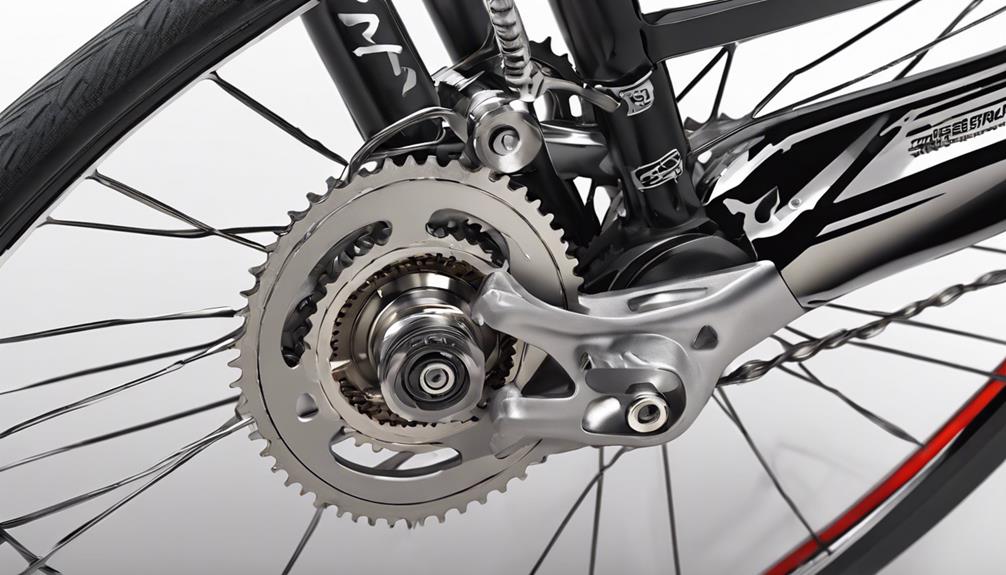
Sprag clutch freewheels employ sprags to facilitate torque transmission within bicycles, ensuring efficient power transfer. When the cyclist stops pedaling, the sprags disengage, allowing the wheel to spin freely without moving the pedals. The design of sprag clutch freewheels enables smooth engagement and disengagement, leading to efficient power transfer when pedaling resumes. The instant engagement of the sprags ensures quick and responsive power delivery, enhancing the overall riding experience.
Due to their simple yet effective design, sprag clutch freewheels require minimal maintenance. Cyclists can enjoy reliable performance in various riding conditions without the need for frequent adjustments or repairs. The durability and functionality of sprag clutch mechanisms make them a popular choice among cyclists seeking consistent and hassle-free operation. Whether navigating city streets or tackling rugged terrains, sprag clutch freewheels provide the necessary torque transmission for a smooth and enjoyable ride.
Frequently Asked Questions
How Does a Bicycle Freewheel Work?
We know how a bicycle freewheel works. It allows pedals to rotate independently from the rear wheel, ensuring smooth coasting. The mechanism engages during forward pedaling and disengages when coasting or backpedaling, playing a vital role in efficient cycling.
What Is the Principle of Freewheel?
Freewheeling is akin to a river flowing, allowing us to move forward effortlessly. The principle of a freewheel is to enable coasting by disconnecting pedals from the wheel, granting us the freedom to control our speed effortlessly.
What Is the Free Wheeling Technique?
Freewheeling technique on a bicycle involves coasting without pedaling, allowing riders to conserve energy and maintain momentum. It's crucial for controlling speed and balance during descents, enhancing the overall riding experience.
What Is the Difference Between a Freewheel and a Freehub?
We differentiate between a freewheel and a freehub by their attachment methods to the hub and compatibility with sprocket configurations. Freewheels thread onto hubs with a lockring, while freehubs use a splined interface for cassettes, offering more versatility.
Conclusion
In conclusion, the bicycle freewheel is a marvel of engineering, allowing for seamless transmission of power while enabling the wheel to rotate independently of the pedals.
Its intricate mechanisms, such as the ratchet and pawl, star ratchet, roller, and sprag clutch, work in harmony to provide cyclists with a smooth and efficient riding experience.
The freewheel is like a symphony of precision, orchestrating the dance between pedal power and wheel rotation with unparalleled grace and finesse.
Olivia’s writing is not only informative but also inspiring. She has a knack for telling stories that capture the essence of cycling and the joy it brings to people’s lives. Her writing has been praised by readers and industry experts alike for its clarity, depth, and authenticity.
In addition to her writing, Olivia is also an avid cyclist. She enjoys exploring new trails and routes and has participated in several cycling events and races. Her first-hand experience with cycling gives her a unique perspective on the sport, reflected in her writing.
Overall, Olivia is a talented writer passionate about cycling and dedicated to producing high-quality content for FlatironBike. Her contributions to the magazine have helped make it a go-to source for cycling enthusiasts worldwide.
-

 Electric Bike3 months ago
Electric Bike3 months agoHow To Turn Your Bike Into An Electric Generator
-

 Bike2 months ago
Bike2 months agoAdvantages and Disadvantages of a Carbon Fiber Bike Frame
-

 Beginners Guides2 months ago
Beginners Guides2 months agoA Guide to Right Hybrid Bike Posture: How to Sit on the Bike for Optimal Performance
-
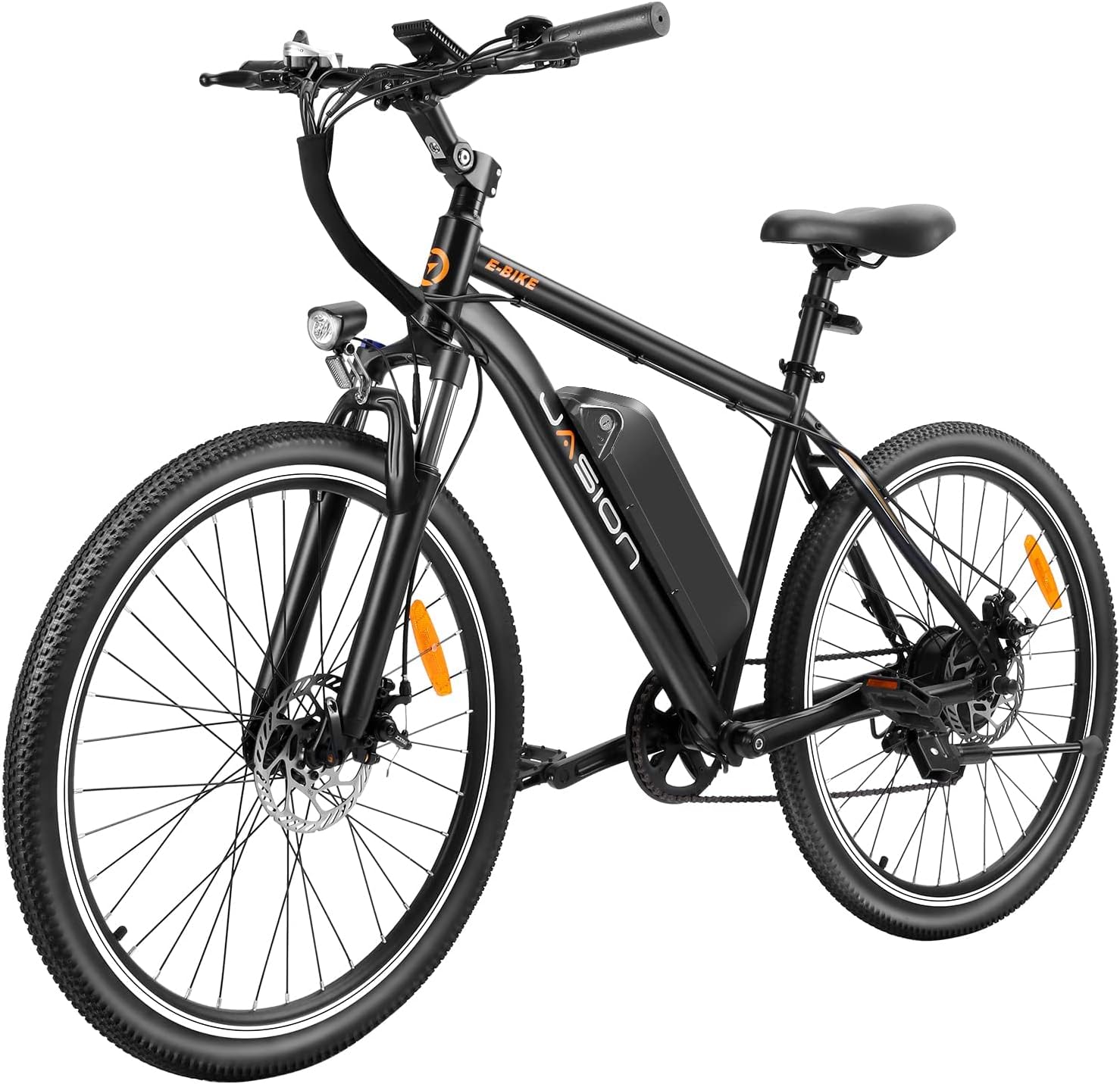
 Vetted3 months ago
Vetted3 months agoJasion EB5 Electric Bike Review: Commute Mountain Bike for Adults
-

 Vetted2 months ago
Vetted2 months ago12 Best Men's Cycling Bib Shorts for Comfort and Performance – Reviewed & Rated
-
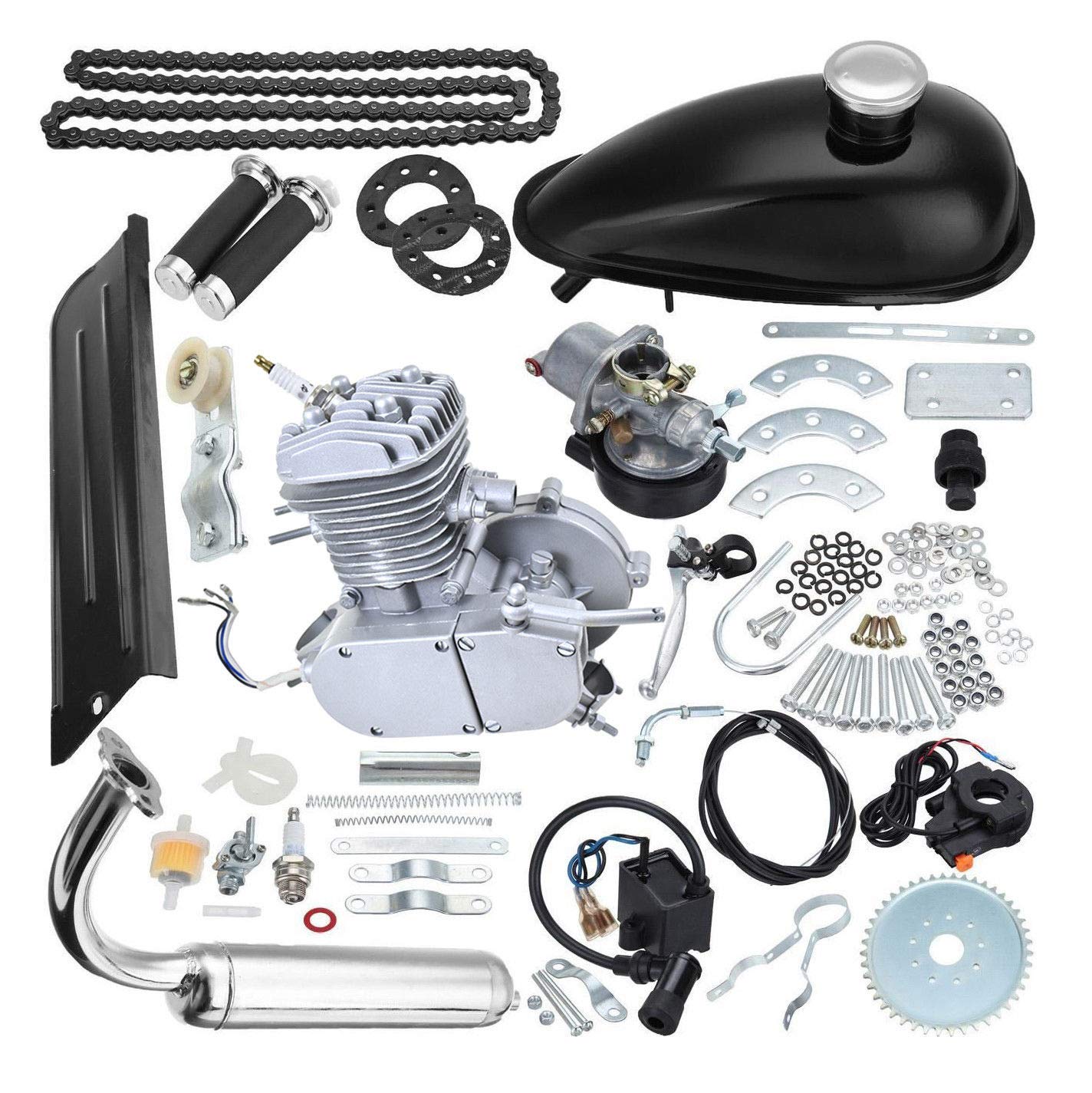
 Vetted3 months ago
Vetted3 months agoReview: 80CC Motorized Bicycle Gas Engine Kit with Performance Carburetor
-

 Beginners Guides2 months ago
Beginners Guides2 months agoWhere Are KTM Motorcycles Made?
-

 Vetted3 months ago
Vetted3 months agoFREESKY Electric Bike Review: 1000W Motor, 48V Battery, Full Suspension









